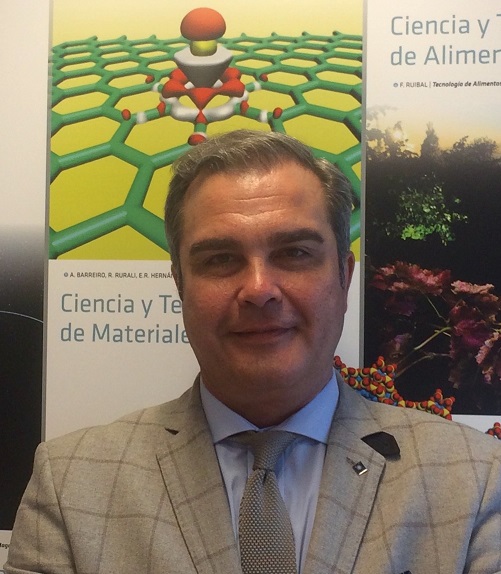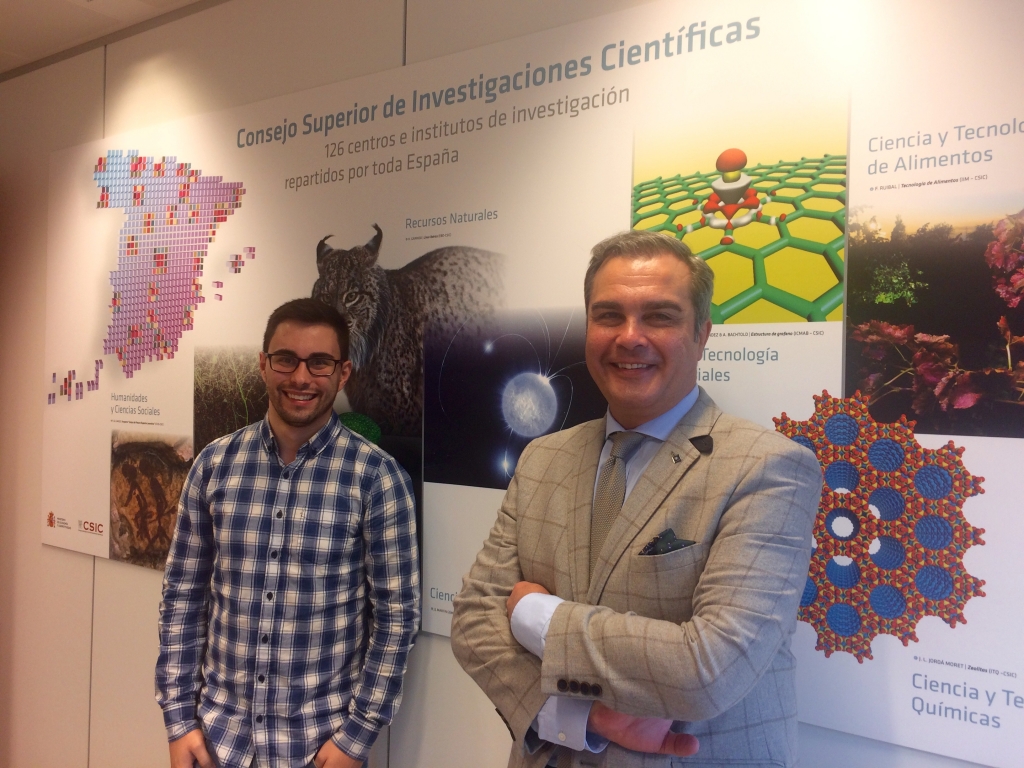
INTERVIEW WITH JOSE CARLOS DEL TORO INIESTA
Doctor in Physics by the University of La Laguna and Scientific Researcher of the CSIC at the Instituto de Astrofísica de Andulcía. He is a specialist in solar magnetic fields and, more specifically, in diagnostics of polarized light in the presence of magnetic field. He has published about one hundred and twenty scientific papers in journals and specialized conference proceedings. Editor of two books and author of another entitled “Introduction to spectropolarimetry” (2003), published by Cambridge University Press. Professor at universities and research centers in Spain, Japan, Austria and Germany. He co-directed the construction of the IMaX magnetographer for the international Sunrise mission, is an associate scientist of the AIA instrument of NASA’s SDO mission and co-investigator of the ESA’s SO / PHI instrument. He was Director of the Astrophysics Institute of Andalusia from 2004 to 2007. He is currently National Manager of the Area of Space of the Research and Innovation State Plan.
You have come to the intermediate evaluation meeting of the project “GREST: Getting ready for EST” funded by H2020: Developing new world-class research infrastructures with about 3 million euros and coordinated by the Instituto de Astrofísica de Canarias (IAC). Can you summarize the objectives of the project?
GREST is dedicated to developing all the technologies that are needed for EST, the great European solar telescope, which are still immature or not available at present.
The work package that leads in the project “GREST: Getting ready for EST” is aimed at developing a new technology. For non-experts in the field, could you explain what it is?
Our work package is intended to develop large-format optical liquid crystal retarders (ROCLI). These devices are electro-optical, which, plainly, means that their optical properties vary with the action of an electric field. Specifically, we use these ROCLI to measure the polarization of light, key magnitude to characterize it and that, in Solar Physics, we use fundamentally to measure magnetic fields on the surface of our star. The ROCLIs are a useful, convenient and relatively inexpensive alternative to rotating crystalline sheets (the most conventional solution), which have several drawbacks that would be tedious to list. We currently use ROCLI that are too small for the requirements imposed by a telescope such as EST. We need to make them bigger. The procedure, however simple it may seem, is by no means trivial. That is where we are working to achieve operating sizes of the order of 15 cm when now we only have them on the order of 2.5 cm.
Do you often work with the Instituto de Astrofísica de Canarias in the presentation and execution of projects?
Yes of course. All science is collaborative and so it is Astrophysics, indeed. The IAC Solar Physics group is a world reference and we are fortunate to have them at home. The relationships between them and our IAA-CSIC group are unbeatable and long lasting.
What kind of relationship do you have with the member companies of the consortium? I see that there are companies from Italy, Switzerland and England.
In our work package participate the Swiss company Arcoptix. They are responsible for the final manufacture of the ROCLI under the specifications we give them. In the package they participate The National Institute of Aerospace Technology (INTA, Torrejón de Ardoz), IAC (La Laguna) and the Max-Planck-Institut für Sonnensystemphysik (Göttingen, Germany), coordinated by the IAA-CSIC.
The project “GREST: Getting ready for EST” is one of the six projects included in ESFRI Roadmap 2016. Can you explain how this affects the project? And for those who do not know what is ESFRI (European Strategy Forum on Research Infrastructures), tell us what it is and what it serves.
ESFRI provides the list of scientific facilities considered strategic for Europe in the coming years. For EST, to be in this list supposes the support of the scientific community and of the European Commission itself like key scientific installation. This is an acknowledgment of the quality of Solar Physics made in Europe and of its potential role of innovative activity and technological development. For Spain it is even more important because the telescope will be installed in one of the Canary Islands observatories.
With respect to the research lines financed by the H2020, do you find “hollow” easily for your research group?
Until recently, finding funding for basic space science in H2020 was a bit complicated. Things are changing, but it must be said that space research is a peculiar sector because of the existence of the European Space Agency (ESA). Linked, as it could not be otherwise, to the European Union, ESA incorporates countries that do not belong to the EU and is created independently of it. In the founding treaties, the ESA’s scientific program is a must for each of the member states. This means that, even if your country does not participate in a scientific mission, the quota must continue to be paid. The best way to contribute is by funding the research of your national groups participating in large international consortiums. Part of this investment not only leads to scientific advances but also reverts to the national industry that has to participate in various stages of the projects. Thus, space projects have traditionally used the State Plan for Research, Development and Innovation to obtain the necessary funding through their competitive competitions. Incidentally, it should be noted that, in reality, these projects have already been evaluated by ESA and should therefore be considered as fully European, on an equal footing with those funded by H2020. In earth astronomy, the situation is usually different and the proposals to H2020 have long been numerous.
You are telling me that “on land” there is no parallel agency to the ESA – European Space Agency – what do you think about the ESA?
Well, talking about opinions about the ESA would give to write a book. In my view, its structure, the result of the same European history and sharing the same philosophy, is too mediated by the national interests of the member states. In the case of scientific missions, for example, it places us in inequality in front of our American colleagues. While NASA is truly a national agency, with clear unique interests, and evaluates, allocates, and finances projects, ESA evaluates, assigns, but does not provide the necessary funding. These endowments come from the countries of those researchers who have succeeded. On many occasions, there is the sad fact that, in the short term, problems in a country cause the collapse of a complete instrument, leaving the rest of the consortium in a compromised situation. Criticism like the previous one could surely do many, but we must also say that Europeans can be proud of the ESA and the many achievements of it. In the scientific field, such successes are comparable and even superior to those achieved by NASA, although never so well known by the population.
Newly appointed National Manager of the Space area of the National R&I Plan, have you already thought about what ideas you would like to contribute to this new post?
The position of National Manager is, above all, a service position. I have to play the role of a link between researchers and the State Research Agency (AEI), which is, by law, responsible for allocating R + D funds. It is also my role to represent Spain in the steering committees of those missions of ESA in which the Spanish groups hold the leadership of some instrument. The responsibility is great and the work done is not small, but I face this new temporary stage of my career with great enthusiasm. Our Project AMPHIBIAN focuses on the strategy of Rare Earths magnets´ substitution, but that replacement will not be possible in all the key applications as for example the electric cars´ engines. To sum up, this is a complex issue and its solution should come from different approaches. In this regard it is important to work also on solutions coming from the mining sector, which would help to improve the environmental impact of the rare earths extraction.

Jose Carlos del Toro Iniesta with Francisco Bailén Martínez who works as an optical engineer at the IAA-CSIC for the GREST project.
